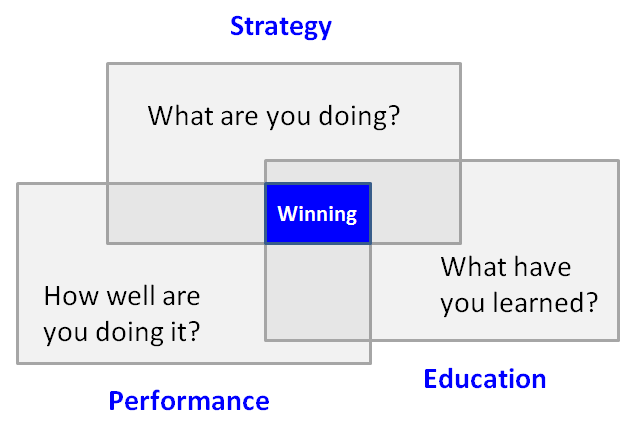In consulting, writing proposals and statements of work are the lifeblood of the firm. It is akin to fisherman throwing out nets, or farmers planting seeds. If you are not putting together proposals and pitching potential clients, you are dead.
I’ve been writing a lot of consulting proposals recently. Generally, I like this because it sync up with my personal Venn. It is strategic, I am good at it, and I am learning.

Include the basics. In the simplest sense, proposals describe the project you will deliver and what the customer will get out of it. It has germane stuff like timelines, activities, deliverables, resources, and pricing. Of course, it has the basics.
More importantly, it needs to answer the client’s key questions. If it does not do that it is essentially useless. You are selling something that does not solve their problem.
Target the right people. Fundamentally, I think marketing is making it easy for the client to buy. This presupposes many things: 1) you are targeting the right people 2) with the right service 3) for the right reason 4) at the right time. You are getting the who, what, why and when correct. In the example below, you might be targeting the COO for a cost-reduction, labor cost reduction project, right after bad earnings.

Consulting buyer are risk-averse. Seth Godin, the ultimate marketer, points out that B2B buyers are risk-averse. Their primary goal is to “not blow it“. Sad, but very true. So the proposal should give the reader confidence that by hiring you – they are making a sound decisions – and not making a huge career mistake.
Make it easy to buy, easy to say “yes”. Once those basics are taken care of, I am convinced that the true job of a proposal writer is to make it easy for the prospect to say “yes, I will buy it.” Succinctly describing what the client will get with, and persuasively, showing them that it is valuable and differentiated.
Top 12 proposal mistakes. Here is a list of proposal mistakes. Many of which I have committed, but most of which are inexcusable.
Stupid and sloppy
- Leaving a different client’s name in the proposal (or referencing wrong locations)
- Having typos, incorrect math, poor grammar, syntax problems, or poor usage
- Leaving comments in the document (forgetting to “accept all changes”)
- Mismatching font, bullets, or style – obviously a copy/paste from somewhere
Average = Bad
- Poor writing which is not specific; basically brochure-ware
- Repetitive points, circular logic, shallow arguments; client asking, “so what?”
- Lots of consulting-ese which make no sense; gross use of jargon
- Lots of features (WHAT), with very few benefits (SO WHAT)
- Limited understanding of client; introduction is just a canned response
- Little narrative; it feels “thrown together” instead of telling a comprehensive story
- Taking too long to complete; not being responsive to client’s time frame
- Not including the logic of the pricing (time and expense vs. flat fee etc)
What consulting proposal mistakes have you seen or committed?

Last year I made the mistake of writing an essay as an executive summary. As a solo consultant I had to remember my clients really just want a brief recap of the situation so they were assured I grasped the problem. My proposal are my contracts so a series of yeses from the start makes it easier to secure contracts. He was bored reading it and I had to explain it more because I wasn’t succinct.
Yes, have all done that. Believe the brevity and specificity is difficult. Instead, many newbies (including me) can use a lot of words to say little.
One of the best tricks I tell others is to explain your proposal as if to your nephew, cousin, or high schooler. . . . and that is what you should put on paper.
Glad to hear that you and your client have enough rapport to give it a second try. Keep going.
Tom Sant has some great books on writing proposals. I love his “NOSE” formula & use that as a checklist anytime I am putting together a proposal.
I have not heard of Tom Sant. I just ordered it on Amazon. Thank you for that tip. Reading some Amazon reviews, looks like NOSE = needs, outcomes, solutions, evidence. Awesome, thanks for that.
This is a great post. It’s concise, and contains a really great breadth of information.
I thought I’d point out that there’s a typo in the 4th last bullet point in the “Average = Bad” section:
Limited understanding of client specifics; introduction is basic can [AND] canned.
Many thanks – fixed.